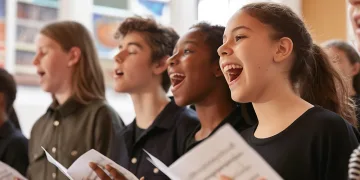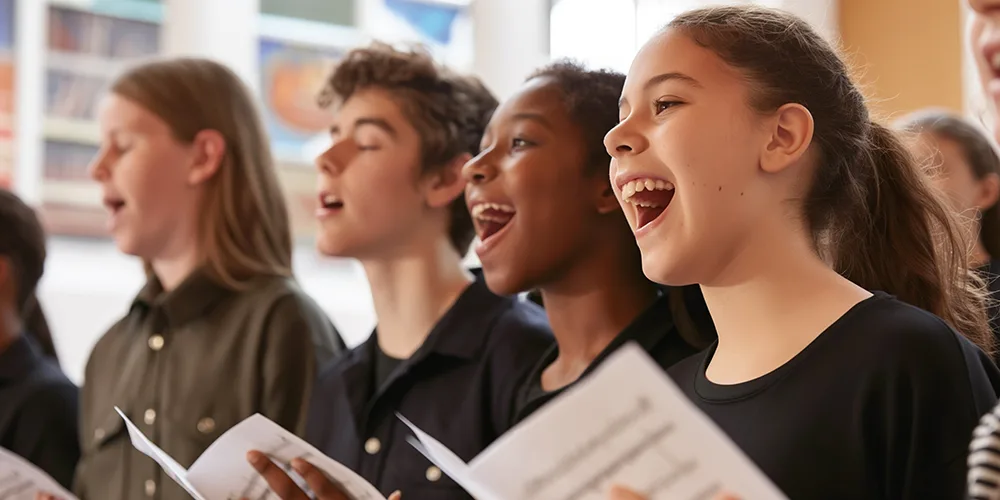By Emily Crocker, former V.P. of Choral Publications at Hal Leonard
Unbalanced choirs, the perfect work for a beginning choir, no budget—these are the themes we often see on social media. One thing has changed from decades ago when I started teaching is that the middle school choral director has many options for choosing repertoire. Composers and publishers offer specialized series for middle school ensembles. ACDA and other organizations now offer honor choir opportunities and repertoire recommendations. If anything, it can seem like there are too many choices. Selecting Music
Know your singers and their voices. Range and tessitura should be appropriate for the singers’ ages and development.
- Emphasize basic vocal technique. Music should encourage healthy vocal production.
- Teach music literacy. Students should sight read daily, using a sequential method.
- Plan well-balanced programs. Students should sing music of all styles, periods, and genres.
- Determine the most appropriate ensemble groupings for your singers. Group students appropriately in ensembles best suited to encourage success based on school and district policies. These may include treble voices, the emerging low voice choir, and mixed voices. • Get the singers in the door and get them singing. My very first published piece of music was “The Drunken Sailor,” published by Jenson Publications in 1980. Some current opinions have said this song is not appropriate for children to sing. In 1979, my sixth graders loved it when I went to the piano and played a loud D minor boom-chuck while they sang rowdily “Hooray and up she rises!” These kids signed up and sang and stayed in the choir. From that point, they trusted me and sang whatever I put in front of them. Not every first work you choose needs to be “The Drunken Sailor,” but over time and with the help of trusted composers and colleagues, I noticed certain qualities in the entry-level works (and beyond) that were most successful with students. They often led to continued participation in singing.
Music for your singers should be:
- Well-crafted
- Use appropriate ranges
- Employ smooth voice-leading
- Contain interesting vocal lines
- Have a melodic vocal part for emerging low-voice singers. Treble parts can contain a bit more complexity and occasional divisi or descants.
Texts may vary widely from serious to whimsical, but it is important they be authentic and not perceived as too babyish.
Try these guidelines:
- A certain level of sophistication or intellectual challenge
- Poetic texts
- Languages other than English
- Diverse cultures
- Folksongs
- Romantic love if in third person or general in content
- Broadway-type music such as “Seasons of Love” or “The Greatest Showman” are often more successful than the latest pop hit.
Editor’s Note: The article continues with sections on Texture, Adapting Music, Writing Music, and Publishing Music. Read the full article in the Winter 2020 issue of ChorTeach at:
























